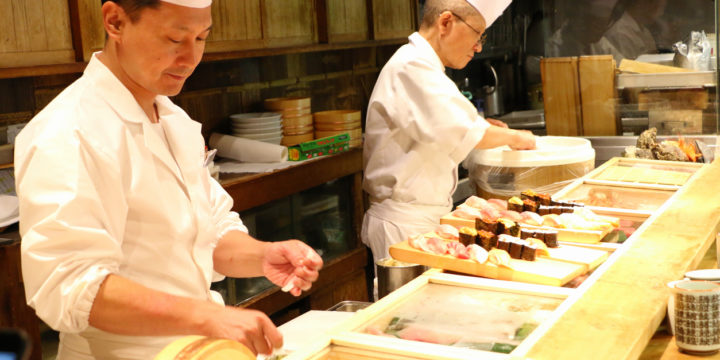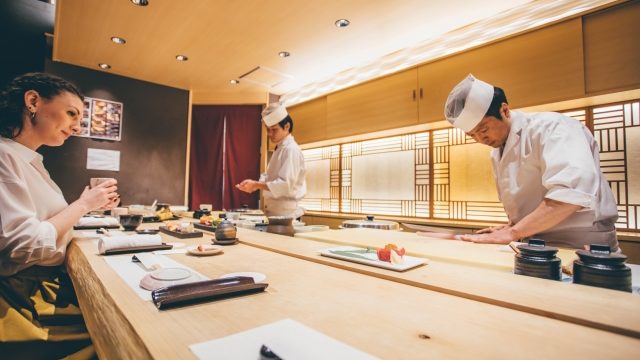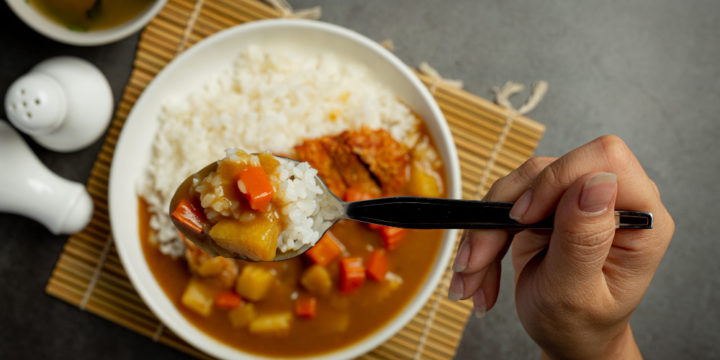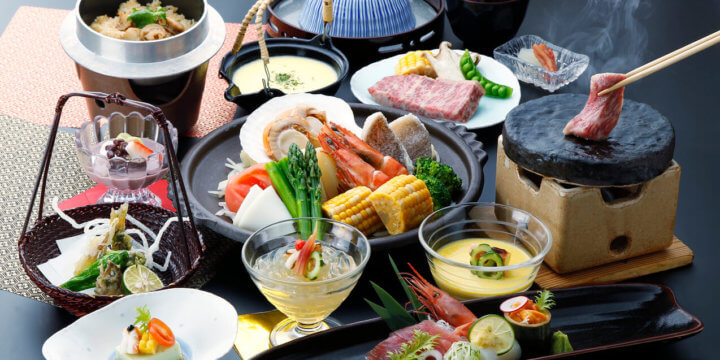23,000 Japanese Restaurants in the United States?? Latest Information on the Japanese Food Industry in the U.S. in 2023
Visiting this website, you are probably interested in trends of the Japanese food industry around the world. Aside from Japan, the origin of the cuisine, it is the United States that leads major movements of the market.
Currently, 500,000 Japanese citizens live in the United States, whereas there are about 1.5 million Japanese Americans. Japanese communities are rooted in the nation and support the culture of Japanese cuisine.
JETRO (Japan External Trade Organization) released a report “Survey of Japanese Restaurants in the United States” in March 2023 in Japanese. Based on the report, this article will provide the latest information about Japanese cuisine businesses in the United States.
1. About 23,000 Japanese Restaurants in the United States


First, let’s see the number of Japanese restaurants in the United States. According to the report, the number increased by almost 24%, from 186,000 in 2018 to 23,064 in 2022.
Below is the list of the top 20 states that have the most Japanese restaurants as of 2022.
Japanese restaurants are concentrated in cities on the West and East Coasts in California, New York, New Jersey, Washington, and Florida, the areas where immigrants from Japan arrived in the first place or Japanese citizens tend to prefer. Since there are a lot of Asian immigrants as well, these areas were ready to accept Japanese food culture.
California, ranked first above, is known for the California roll that was invented by a Japanese chef in the 1960s. Also, the 2022 Michelin Guide California awarded starts to 25 restaurants in Los Angeles, 10 of which are Japanese restaurants. We can tell how popular Japanese cuisine is in this state.
Texas has seen a steady growth in the population and Japanese restaurants also increased by 49%, from 802 in 2018 to 1,197 in 2022. Thus, many involved in the Japanese food industry regard population growth as a good opportunity to expand their businesses.
Some estimate that the global pandemic led to the closure of 10% of the 1,900 Japanese restaurants in New York between 2018 and 2022. However, the 2022 data shows that there are more restaurants than the pre-COVID time and proves the market’s recovery.
2. Current Trends of Japanese Cuisine in the United States
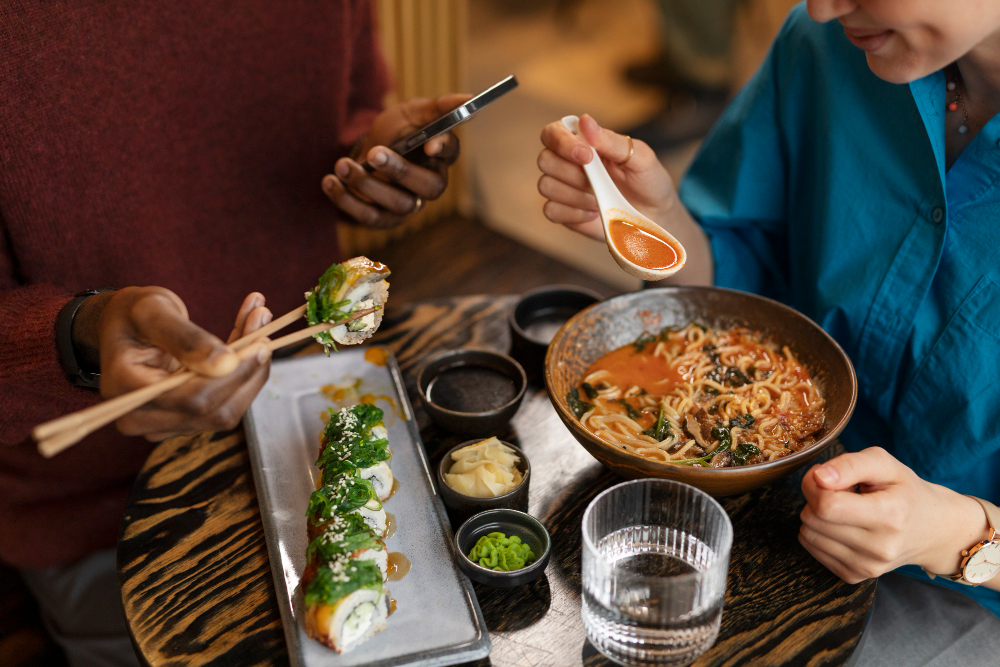

Until the 1990s, Japanese restaurants in the United States mostly featured a comprehensive menu, including sushi, sashimi, teriyaki chicken, and tempura. Since customers have come to desire more authentic taste, Japanese restaurants started to focus on certain dishes around 2000. Places specializing in kaiseki, robatayaki grill, soba, yakitori, ramen, and udon opened one after another and gained popularity.
In particular, ramen gained remarkable traction around the 2010s. It is said that there are already more than 6,000 ramen shops in the United States. For example, in Los Angeles, three places opened in the last few years: AFURI, known for Yuzu Shio ramen (salt-based broth with yuzu citrus) opened in 2021; Ramen Nagi, the third branch in the States and known for niboshi (dried anchovies) broth, in 2022; and Ramen King Keisuke from Keisuke Group known for ramen flavored with dark miso, called “kuro miso,” in 2022.
Sushi has been spreading widely, ranging from affordable rolls at supermarkets to an omakase style that features seasonal ingredients directly imported from Japan and is served at the counter of high-end restaurants. The latter targets the affluent class and has firmly gained its ground in urban areas. As of 2023, MASA, a popular sushi place in New York, serves an omakase meal course for 950 USD. It is one of the examples of successful upscale Japanese restaurants that raise its value with ingredients and services.
Since macrobiotics is also drawing attention in the United States, this originally Japanese diet has led to new dishes in cities, such as sushi with brown rice. Japan does not have many places that serve brown rice sushi, so we can say it is a new style developed in the States for health-conscious people.
3. Japanese Restaurant Management in the United States


Until about 2000, 70% of the Japanese restaurants in the United States were run by Japanese people. Over the last two decades, this trend changed and it is estimated more than 80% of the owners are non-Japanese people today.
In the past, immigrants from Japan used to run Japanese restaurants, but after decades it seems that the owners’ age and the lack of successors caused many people to sell the places to Asian Americans.
However, even if some people take over the management, many owners still have difficulty in securing chefs who can cook Japanese cuisine. As mentioned above, Japanese restaurants increased by 24% between 2018 and 2022. The demand for chefs keeps rising, while the supplies are not catching up with the pace.
After the Trump administration’s inauguration in 2017, it became more challenging to obtain a work visa or green card. Even those who have some experience in cooking Japanese cuisine cannot get a visa and many restaurants are struggling to recruit chefs.
These are the latest updates on the Japanese food industry in the United States in 2023, informed by the JETRO report. If you want to know more about the situations in the States or to recruit Japanese chefs, please contact Washoku Agent!
4. What If I Have a Problem in Hiring?
“I do not know what my restaurant should feature to attract Japanese chefs.”
“I have an idea of the chefs I am looking for, but I do not know how to find them.”
“We tried to recruit on our own before without success, so we want to find a truly skillful chef this time.”
“Since no staff member speak Japanese, we want to entrust the whole task of hiring Japanese chefs to someone else.”
If you have a problem in recruiting Japanese chefs, feel free to contact us Washoku Agent!
- Can Every Japanese Chef Make Japanese Curry!?
- Not Only the Michelin Guide: World’s Restaurant Awards That Hiring Managers at Japanese Restaurants Should Know
Do you want to know more about Global Japanese Cuising Market?
If Yes, please submit this form and you will receive it by email.
on WhatsApp.


